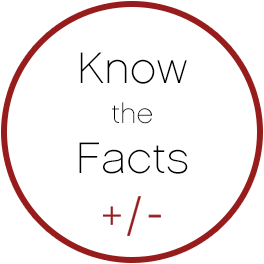HIV is a virus that attacks the immune system, our body’s natural defense against illness. If HIV is left untreated, a person’s immune system will get weaker and weaker until it can no longer fight off life-threatening infections and diseases.

HIV Prevention
Individuals can reduce the risk of HIV infection by limiting exposure to risk factors.
Male and female condom use
Correct and consistent use of male and female condoms during vaginal or anal penetration can protect against the spread of sexually transmitted infections, including HIV. Evidence shows that male latex condoms have an 85% or greater protective effect against HIV and other sexually transmitted infections (STIs).
Testing and counselling for HIV and STIs
Testing for HIV and other STIs is strongly advised for all people exposed to any of the risk factors. This way people learn of their own infection status and access necessary prevention and treatment services without delay. WHO also recommends offering testing for partners or couples. Additionally, WHO is recommending assisted partner notification approaches so that people with HIV receive support to inform their partners either on their own, or with the help of health care providers.
Voluntary medical male circumcision (VMMC)
Medical male circumcision, reduces the risk of heterosexually acquired HIV infection in men by approximately 60%. This is a key prevention intervention supported in 15 countries in Eastern and Southern Africa (ESA) with high HIV prevalence and low male circumcision rates. VMMC is also regarded as a good approach to reach men and adolescent boys who do not often seek health care services. Since the 2007 WHO recommendation for VMMC as an additional prevention strategy, 23 million adolescent boys and men in ESA were provided a package of services including HIV testing and education on safer sex and condom use.
Antiretroviral drug use for prevention
Prevention benefits of ART
A 2011 trial has confirmed that if an HIV-positive person adheres to an effective ART regimen, the risk of transmitting the virus to their uninfected sexual partner can be reduced by 96%. A recent study published in 2019 showed that the risk of HIV transmission through sex, where condoms are not used, in serodifferent gay couples is effectively zero when HIV viral load is suppressed through ART treatment. The WHO recommendation to initiate ART in all people living with HIV will contribute significantly to reducing HIV transmission.
Pre-exposure prophylaxis (PrEP) for HIV-negative partner
Oral PrEP of HIV is the daily use of ARV drugs by HIV-negative people to block the acquisition of HIV. More than 10 randomized controlled studies have demonstrated the effectiveness of PrEP in reducing HIV transmission among a range of populations including serodiscordant heterosexual couples (where one partner is infected and the other is not), men who have sex with men, transgender women, high-risk heterosexual couples, and people who inject drugs.
WHO recommends PrEP as a prevention choice for people at substantial risk of HIV infection as part of a combination of prevention approaches. WHO has also expanded these recommendations to HIV-negative women who are pregnant or breastfeeding.
Post-exposure prophylaxis for HIV (PEP)
Post-exposure prophylaxis (PEP) is the use of ARV drugs within 72 hours of exposure to HIV to prevent infection. PEP includes counselling, first aid care, HIV testing, and administration of a 28-day course of ARV drugs with follow-up care. WHO recommends PEP use for both occupational and non-occupational exposures and for adults and children.
Harm reduction for people who inject and use drugs
People who inject drugs can take precautions against becoming infected with HIV by using sterile injecting equipment, including needles and syringes, for each injection and not sharing drug using equipment and drug solutions. Treatment of dependence, and in particular opioid substitution therapy for people dependent on opioids, also helps reduce the risk of HIV transmission and supports adherence to HIV treatment. A comprehensive package of interventions for HIV prevention and treatment includes:
needle and syringe programmes;
opioid substitution therapy for people dependent on opioids and other evidence-based drug dependence treatment;
HIV testing and counselling;
HIV treatment and care;
risk-reduction information and education and provision of naloxone;
access to condoms; and
management of STIs, tuberculosis and viral hepatitis.
Elimination of mother-to-child transmission of HIV (EMTCT)
The transmission of HIV from an HIV-positive mother to her child during pregnancy, labour, delivery or breastfeeding is called vertical or mother-to-child transmission (MTCT). In the absence of any interventions during these stages, rates of HIV transmission from mother-to-child can be between 15–45%. MTCT can be nearly fully prevented if both the mother and the baby are provided with ARV drugs as early as possible in pregnancy and during the period of breastfeeding.
WHO recommends lifelong ART for all people living with HIV, regardless of their CD4 count clinical stage of disease, and this includes women who pregnant or breastfeeding. In 2018, 82% of the estimated 1.3 million pregnant women living with HIV globally received ARV treatments to prevent transmission to their children. A growing number of Member States are achieving very low rates of MTCT and some (Antigua and Barbuda, Armenia, Belarus, Cuba, Malaysia, Maldives, St Kitts and Nevis and Thailand) have been formally validated for elimination of MTCT of HIV as a public health problem. Several countries with a high burden of HIV infection are also progressing along the path to elimination.

